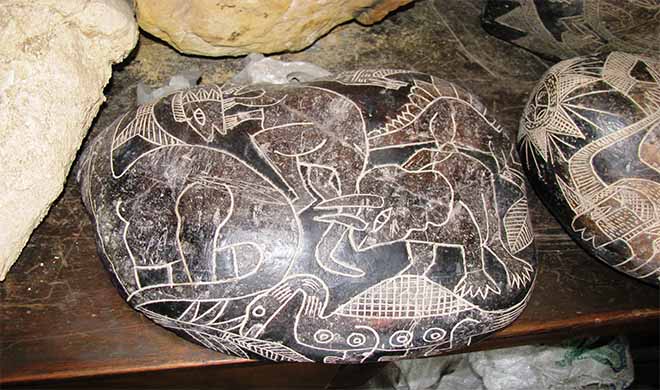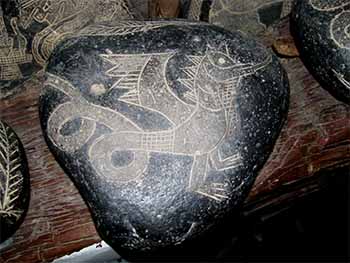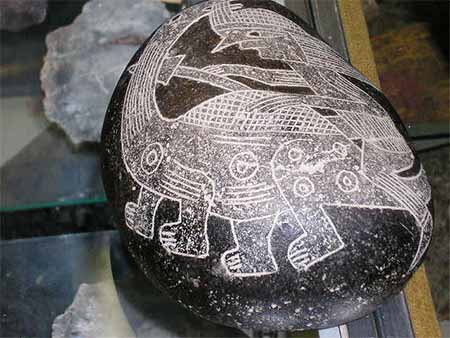Peru Ica Stones
Men And Dinosaurs Together ?

The Ica stones are among the most controversial archaeological objects of recent decades. They illustrate episodes considered impossible by science: prehistoric men using spotting scopes or performing complex surgical operations, images of the Earth seen from the sky and especially men and dinosaurs side by side. Are these clever tricks or must we rewrite the oldest history of our planet and all of humanity?
In the 1960s, Dr. Javier Cabrera - surgeon and university professor of biology - received an engraved stone from a Peruvian peasant. He uses it as a paperweight until the day when, while leafing through a paleontology work, he recognizes in the drawing engraved on his stone the silhouette of a bird that disappeared millions of years ago.
The beginning of research
Who could have drawn with such precision an animal known only to a few specialists? Dr. Cabrera looked for the source of the stone: it had been found in a cave in the Ocucaje desert after a flood of the Ica River. Among the alluviums were thousands of engraved stones of varying sizes. If you judge by the quantity and the quality of the drawings, it looks like a kind of stone library. From then on, they will be known all over the world under the name of Ica stones: they are made of andesite, one of the oldest and hardest volcanic rocks in the region. According to some experts, they are 220 million years old, 160 million years older than the Andes range.
Until his death, which occurred a few years ago, Dr. Cabrera kept secret on the site of the deposit, while exhibiting the Ica stones in all their variety in his famous private museum. What is so incredible about these engraved stones to arouse so much interest and controversy?
Inexplicable drawings

According to Dr. Cabrera, the Ica stones are eleven thousand in number, all different from each other, and are unique in the world. In addition, they would seem to testify to knowledge that our ancestors were not supposed to have. By studying them one by one, Dr. Cabrera was able to recognize kinds of maps of unknown lands, including Pangea, that is to say the Earth before the continental drift. But not only...
Dinosaurs and men

The men depicted on the Ica stones seem to use modern optical instruments, such as spotting scopes or telescopes to observe the passage of a comet in the sky. Other drawings evoke extraordinarily complex surgical operations: heart transplants with extracorporeal blood circulation, kidney, liver or brain transplants, not counting cesarean deliveries. The Ica stones also depict men riding strange mechanical vehicles, plants unknown in Latin America and animals that have long since disappeared. Finally - and this is what most amazes about Ica stones - men and dinosaurs are represented together: if this corresponded to reality, it would be necessary to rewrite the sixty million years which separate the disappearance of the last of these prehistoric animals of the appearance of man on Earth. In addition, Professor Calvo, director of the Polytechnic Institute of Lima, claims to have found another hundred stones, dating back at least 12,000 years, in the excavations of the archaeological site known as Max Uhle Hugel. Could it be that an unknown civilization lived on Earth sixty-five million years ago and that it had such advanced scientific and medical knowledge? Would the dinosaurs have been the contemporaries of man in these remote times? So many questions that remain unanswered and whose key remains forever engraved in the Ica stones.









































































































































































































































































































































